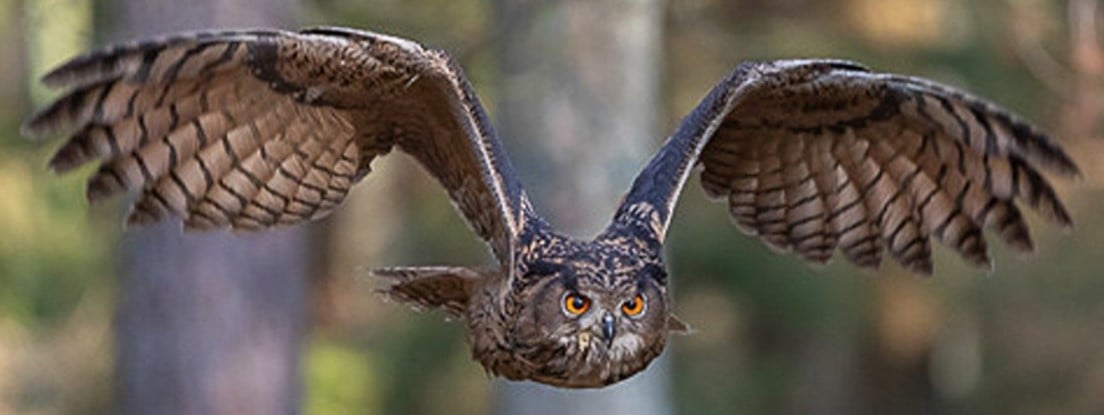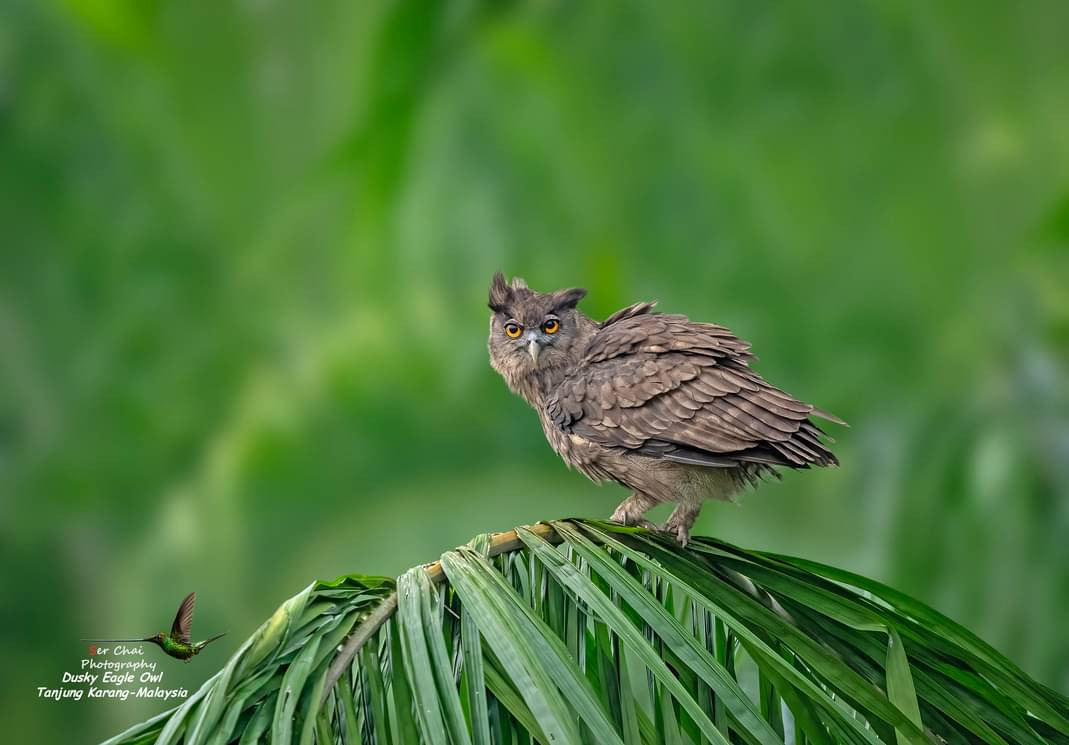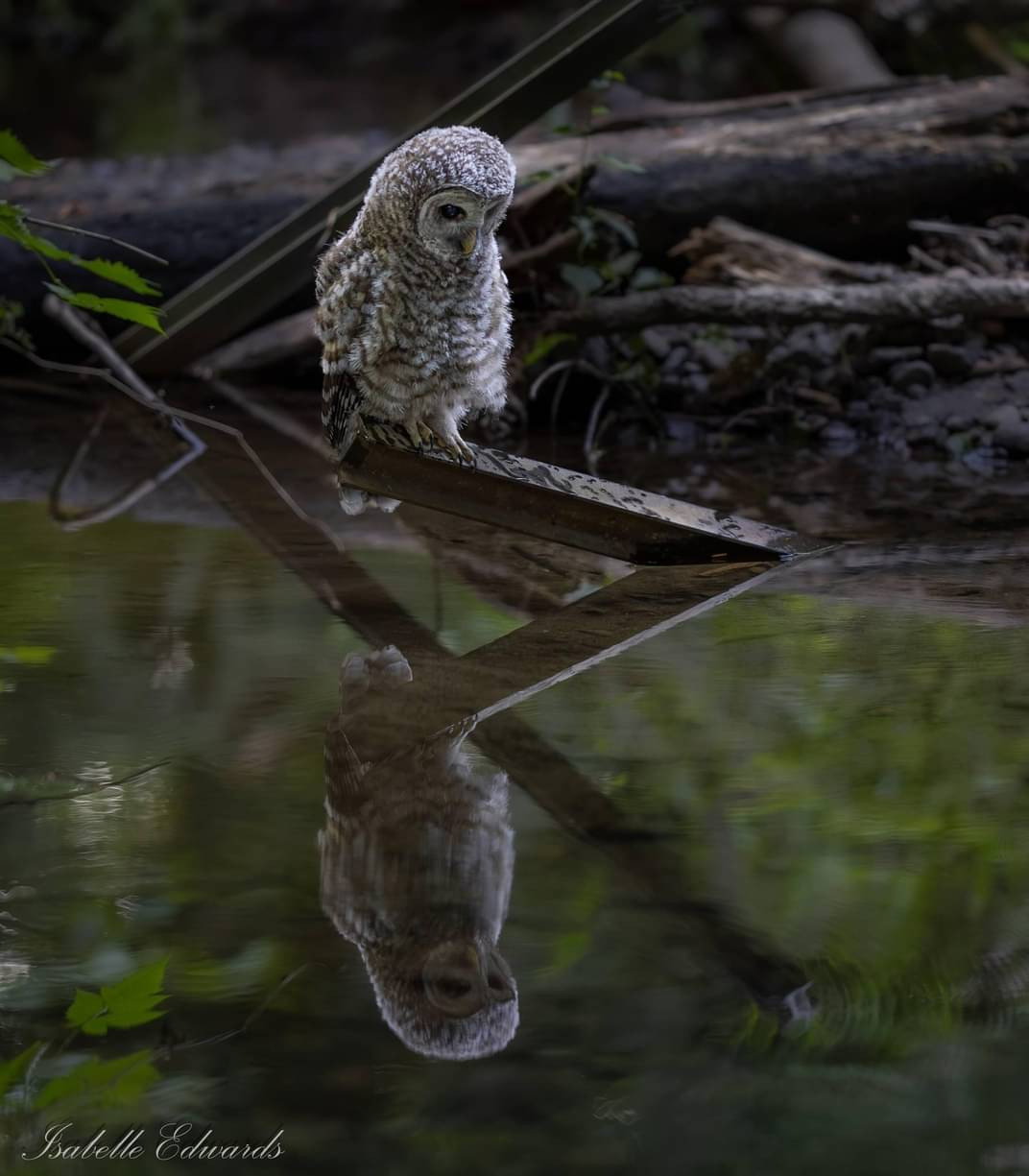This secretive little owl hasn't had a confirmed sighting in almost 30 years, but even in its absence, we have still continued learning about this owl and its relationship (or lack thereof!) to the Asiatic bay owl species.
This is a long read, but I found it riveting in its general owl discussions, the stories of discovery, and the dive into the genetics, taxonomy and conservation of this beautiful hidden creature.
Owls have such a mystique unlike almost any other, and this article highlights a great number of ways they continue to captivate us.
-
The last sighting by scientists of the Itombwe owl, a species endemic to the eastern Democratic Republic of Congo, was in 1996.
-
This was in Itombwe Nature Reserve, a protected area described by its director as "forgotten by a majority of organizations and people who support the conservation of biodiversity."
-
Being overlooked may have helped keep the reserve protected, with the forest remaining intact and satellite imagery showing no roads being carved inside it.
-
Experts agree on the need for further expeditions to study the Itombwe owl, including settling the long-running debate over which genus of barn owl, Tyto or Phodilus, it belongs to.
A lost bird
Everything we know for certain about the Itombwe owl comes from just two individuals: one dead for more than 70 years, and the other also most likely dead by now. The second, a small, chestnut-colored owl, was netted by Tom Butynski’s team in 1996; a wild owl can expect to live 10 years.
Butynski tells Mongabay they held onto the bird for just about an hour, releasing it after measuring, weighing and tagging it. Little did they realize back then the significance of this fleeting encounter: It was the last confirmed sighting of the species to date.
Yet experts say they’re hopeful the Itombwe owl (scientific name Tyto prigoginei, but also commonly referred to as Phodilus prigoginei) flies on quietly — beyond researchers’ radar — in the face of possible extinction.
Out in the wild, researchers say a few thousand may survive in a tiny pocket of Central Africa. Itombwe Nature Reserve in the Democratic Republic of Congo is the bird’s last known location, and the 1996 expedition was one of the last expansive surveys of the Itombwe massif, a mountainous mosaic of grassland, bamboo vegetation and forests.
Butynski’s team also took photos of the owl, which they sent to Michel Louette at the Royal Museum for Central Africa (now AfricaMuseum) in Tervuren, Belgium. Louette, who was in charge of the museum’s bird collection, confirmed it was the Itombwe owl.

Louette could identify the owl because the Tervuren museum housed the only specimen of the species, also known as the Congo Bay owl A squad helmed by Belgian mineralogist-turned-ornithologist Alexandre Prigogine captured that bird in 1951 during an expedition to the DRC when the sprawling Central African nation was still a Belgian colony.
“This owl is virtually unknown,” Louette tells Mongabay.
The 1996 mission was part of a five-month survey organized by the Wildlife Conservation Society (WCS) focused on great apes and endemic birds of the Albertine rift highlands. Many of the birds uncovered during the WCS-led campaign had been cataloged earlier by Prigogine’s crew.
Prigogine carried out some of the most fruitful explorations of the Congo’s biological bounty (the area was then called the Belgian Congo), collecting more than 20,000 specimens. Between 1950 and 1967, he and his collectors helped describe 565 species new to science, including P. prigoginei. The records from Butynski, affiliated with Zoo Atlanta’s Africa Biodiversity Conservation program at that time, were definitive proof the Itombwe owl wasn’t lost.
Then, the bird disappeared again.

Owls, avian members of the order Strigiformes (there are around 225 owl species), come in a variety of hues (ranging from snowy white to tawny brown) and sizes (from the diminutive elf owl to the hefty Eurasian eagle-owl). The owl captured by Butynski and colleagues had a wingspan of 63 centimeters (2 feet) and weighed 195 grams (6.9 ounces), smaller than the planet’s most ubiquitous owl, the barn owl (Tyto alba).
Its upper body was a deep rust color with blackish striations on the belly. The captured individual was presumed to be an adult female, owing to its brood patch (an underbody area of featherless skin that keeps eggs and chicks snug). Prigogine’s type specimen from 1951 in Tervuren was also a female. No male Itombwe owl exists in the scientific record.
Where many birds peek, glance or skim, owls transfix, thanks to their large front-facing eyes and exceptional neck-swinging abilities (a neat 270 degrees in each direction). Owl eyeballs are fixed in their sockets, so this swiveling action is necessary for them to take in their surroundings.
An overlap in the visual field of the eyes allows the owl to focus on an object using both eyes, similar to humans. But their night vision is vastly superior to ours, allowing them to hunt in the dark. In doing so, owls are guided as much by sound as by sight. The ruffed visage isn’t decorative: it funnels sound to their ears. Imagine an ear trumpet for a face, which picks up sound waves over a wider area.

Artist’s impression of the Itombwe owl. The bird was not seen in life at the time of the painting. Painting by S. Berger, Royal Museum for Central Africa collection. Image courtesy of Michel Louette.
Combined with the fact that owls can flap their wings noiselessly, it makes them formidable hunters. Their usual prey are small mammals like rodents, as well as insects, birds and reptiles.
Most owls are carnivorous and nocturnal. Since the Itombwe owl was captured in grassy highlands adjacent to forests (at an elevation of 1,830 m, or 6,000 ft), Butynski and his colleagues hypothesized that it rests in the grasslands during the day and hunts in the woods at night. Prigogine’s owl was also caught napping in a grassy meadow at 2,430 m (7,800 ft). Researchers say they believe it’s a highland species.
“The museum specimen is very interesting for the morphology” — the physical characteristics of the bird — “but you don’t know anything about the biology or the sound it produces,” Louette says. “You don’t even know if it is normally positioned high or low in the trees.”
Even so, it has found itself at the center of a taxonomical tussle. When the type specimen appeared, ornithologists placed it in the genus Phodilus, under the assumption that it was closely related to the Oriental bay owl, Phodilus badius. The feathered frame of its face seemed reminiscent of bay owls — more angular than rounded.
Barn owls come in two genera, Tyto and Phodilus. The latter, also called the bay owl, has only two confirmed members: the Oriental bay owl and the Sri Lanka bay owl, Phodilus assimilis.
So, a bay owl from Africa would indeed be a rare bird.
But experts now say the contours of its facial disk might place the bird among barn owls of the genus Tyto rather than Phodilus. The Itombwe owl’s beak is also more compressed than that of the known bay owls, Heimo Mikkola, a leading authority on owls, noted in his 2012 opus Owls of the World: A Photographic Guide. Its feet, claws and eyes are smaller than those of typical bay owls.
Louette, who published a book in 2023 cataloging the type specimens housed at the AfricaMuseum, called the International Ornithologists Union’s decision to move the Itombwe owl into the Tyto genus “preliminary.”
“They relied on morphology,” he says. “The phylogeny [evolutionary tree] of the bird is not confirmed by DNA research. Morphology is, to an extent, a matter of opinion.” However, he says an attempt to extract DNA from the type at Tervuren was unsuccessful.
A forgotten home
Bay owl or not, a bird known only from a refuge like Itombwe is rara avis — a rare bird. The protected area sits in one of the most politically volatile arenas of the human world. Eastern DRC’s war-torn past and protracted political conflicts have resulted in millions of deaths over the years. According to the United Nations, there are now more than 7 million internally displaced people in the country.
Political instability has also limited scientific ventures and hobbled conservation in one of the most biologically rich places on the continent. Butynski describes Itombwe as a “great refuge” for species that live in montane forests. Elsewhere, the surveyors called it the “richest single forest for African birds.” It’s home to more than 1,000 plant varieties and nearly 600 bird species. Thirty of these are believed to be endemic, found nowhere else on Earth, including the Itombwe owl.
The owl is at risk of disappearing because there’s only one validated population threatened by habitat degradation, loss and fragmentation, Butynski says.
Conservation efforts in the Itombwe region of South Kivu province gained momentum at the turn of the century, propelled by the presence of great apes. The Itombwe reserve’s most high-profile inhabitants are critically endangered eastern lowland or Grauer’s gorillas (Gorilla beringei graueri) and their primate cousins, the chimpanzees (Pan troglodytes).
Itombwe Nature Reserve (INR) was established in 2006 under a government decree, with the support of the international NGOs WWF and WCS and input from a local nonprofit, AfriCapacity, but without the consultation of residents.

Aerial view of the Itombwe Nature Reserve.
There were 600,000 people living in and around the area when the reserve took shape. It took the Congolese Institute for Nature Conservation (known by its French acronym ICCN), the top wildlife authority in the DRC, which manages INR, a decade to define the reserve’s boundaries in consultation with communities.
The ICCN decided to implement a community-based approach involving local chiefs and people. This included forming conservation committees and organizing patrols by eco-guards along with residents.
But official recognition failed to keep anthropogenic chaos at bay. Watching over an expanse of 5,732 square kilometers (2,213 square miles) was a massive undertaking. Threats ranged from mining to hunting to agricultural expansion. Armed groups camping within the reserve made the task all the more challenging.
“We are trying to conserve biodiversity with the involvement of the communities rather than against them. But we now lack support,” Germaine Buhendwa, then director of INR, said in a 2023 dispatch from the Rainforest Foundation Norway.
Support from both international players and residents has ebbed in recent years.
Research published in 2022 documented residents’ deepening discontent with the protected area. People anticipated the reserve would bring much-needed material development to the region, from jobs to roads to tourists. But these benefits haven’t materialized. Study co-author Fergus O’Leary Simpson, a researcher at the University of Antwerp specializing in conservation and conflict in the eastern DRC, says mounting challenges threaten to turn INR into a paper park: a “protected area on paper that has very little implication on the ground.”

Map of Itombwe Reserve produced by Riccardo Pravettoni for Gauthier 2016.
The presence of conservation actors on the ground was thin from the start. Of the five sectors that make up the Itombwe reserve, only two had ranger posts, deploying about two dozen guards. With these personnel, covering even a tenth of the INR would be difficult. In fact, between 2021 and early 2024, hardly any monitoring was happening in the reserve, according to the German nonprofit Berggorilla & Regenwald Direkthilfe, which promotes gorilla protection and is one of the few NGOs still active in the region.
“The Itombwe Nature Reserve is a protected area with high biodiversity and endemic spaces, but forgotten by a majority of organizations and people who support the conservation of biodiversity,” Séguin Caziga Bisuro, INR’s current director, tells Mongabay.
When researchers from the U.S. set out to survey birds in the area last year, they couldn’t access the reserve because of tensions between INR authorities and the local population. Instead, they scoured forests outside the reserve; they didn’t spot any Itombwe owls.
Despite this, Butynski says he’s still optimistic because he came across the owl in a disturbed section of the massif in 1996. There was cultivation, cattle grazing and signs of fire activity nearby. Another possible sighting at a tea estate in Burundi in 1974 hinted at the owl’s ability to persist alongside humans.
The Itombwe owl may have homes away from Itombwe. “Owls are very difficult to come by, especially if you don’t know their calls at night,” Louette says. “Probably this owl is calling somewhere, but no one knows the call.”
In 1990, Robert Dowsett and Françoise Dowsett-Lemaire recorded a “long mournful whistle” in Rwanda suspected of emanating from an Itombwe owl. “We must hope that the bird will appear elsewhere, maybe in Burundi or Rwanda,” Louette says. The two countries share a border with the eastern DRC.
There are other encouraging signs. Simpson says Itombwe’s remoteness could be having a protective effect.
“There are many reasons that conservation is incredibly complex in this context, but even though the reserve is not really working at the moment, the forest has remained quite intact,” he says. There are no roads that lead to the protected area, and there are none within it.
Satellite data suggest forest loss is lower here than in other protected areas in the region, like Virunga National Park. In the past two decades, primary forest cover shrank by less than 3%, compared to 12% in Virunga. Still, remote sensing may miss more insidious impacts, whether from habitat degradation or wildlife hunting.
Earlier this year, park authorities held talks with the local traditional chiefs, who agreed to restart some conservation activities.

While there are still no confirmed sightings of the Itombwe owl, director Bisuro says he doesn’t despair for it. “We don’t believe it is extinct,” he says. “[It] is known by some members of the local community. According to them, the species continues to exist in the reserve.” Bisuro calls for more scientific expeditions to confirm community members’ accounts.
Another encounter could do more than assure scientists the owl endures. It would be a chance to collect elusive DNA samples and put the debate about its identity to bed.





































